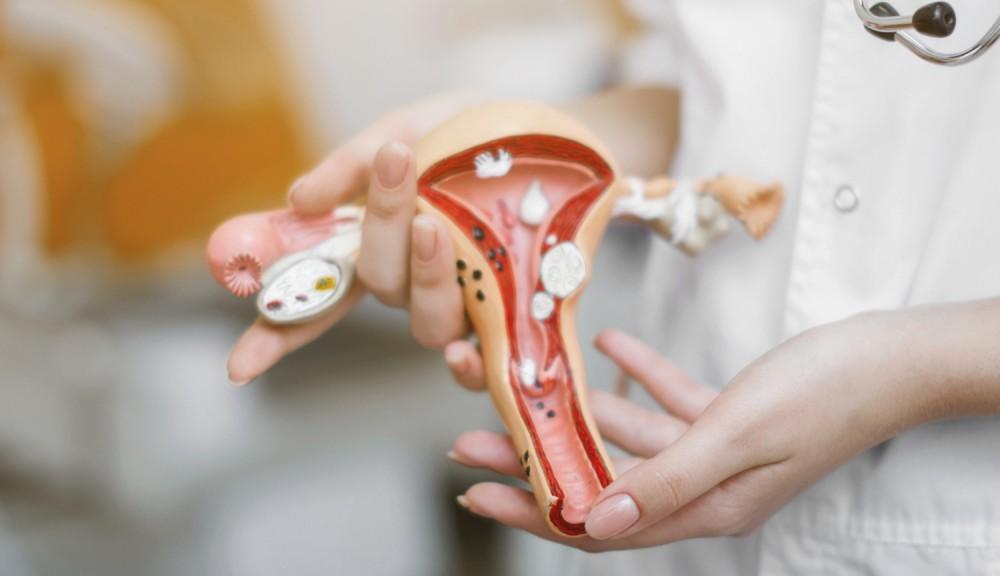Hysterectomies, Part 1 - Here’s What You Need to Know
If you’re considering a hysterectomy, you know that the thought of going through such a major surgical procedure can be overwhelming. The good news is that you’re not alone. In fact, about 600,000 hysterectomies are performed within the United States each year[1].
It’s understandable to experience hesitation when faced with any surgery. However, knowledge is power.
In this blog post, we will provide you with all the information necessary so that you can make an informed decision about whether or not a hysterectomy is right for you.
What is a Hysterectomy?
A hysterectomy refers to a surgical procedure that aims to remove a woman’s uterus.
The uterus is otherwise referred to as the womb. This is where the baby will grow if a woman becomes pregnant. There are many reasons why a woman might opt in favor of a hysterectomy. All of which we will discuss in this article.
The process often involves completely detaching the uterus from the upper vagina, ovaries, and fallopian tubes. It will also need to be separated from the surrounding blood vessels and connective tissues that keep it in place before it can be removed.
If you are considering a hysterectomy, there are a few things that you should know about the different types and methods for removal. Walking through all of the possibilities and options with your doctor is an essential part of the process.
What are the Main Types of Hysterectomies?
There are a few different types of hysterectomies. Which option is right for you will depend on your needs and objectives for the surgery.
Here are the main types of hysterectomies:
Total Hysterectomy
A total hysterectomy is when the surgeon removes the cervix and the uterus. A total hysterectomy will leave the ovaries and fallopian tubes in place.
Hysterectomy With Oophorectomy
A hysterectomy with oophorectomy is a total hysterectomy with the removal of the fallopian tubes and one or both ovaries. For anyone who has not yet been through menopause, the removal of the ovaries will kick-start the menopausal process.
Radical Hysterectomy
A radical hysterectomy removes the uterus, cervix, and the upper part of the vagina. The surgeon may also remove any surrounding tissues or lymph nodes. This is usually done in combination with oophorectomy. Most often, a radical hysterectomy is performed if the patient has cancer.
Supracervical Hysterectomy
A supracervical hysterectomy only removes the upper portion of the uterus, leaving the cervix and surrounding organs in place.
What are the Reasons for a Hysterectomy?
A wide range of conditions can result in a hysterectomy. In some cases, a hysterectomy is offered as one of many options to treat a condition. In others, it might be a last-resort attempt to save a woman’s life.
Here are some of the most common reasons to have a hysterectomy:
Uterine Fibroids (Leiomyomas)
Uterine fibroids, or leiomyomas, are benign tumors inside the uterus. Although they are not cancerous or actively growing, leiomyomas are notorious for causing pelvic pain, chronic bleeding, anemia, and bladder issues. Hysterectomies are the only known treatment that can permanently eliminate leiomyomas and their accompanying symptoms.
Childbirth Complications
In some cases, a woman will face unforeseen complications after giving birth, such as uncontrollable bleeding or other life-threatening symptoms. In these cases, a doctor or surgeon will need to complete an emergency, post-partum hysterectomy to save her life.
Cancer
Cancer of the cervix or uterus is another reason why someone might need to have a hysterectomy. This serves to remove the affected area(s) to eliminate the malignant tumors or infection. With that said, if the cancer is caught in its early stages, other treatment methods (such as radiation or chemotherapy) may be deployed before a hysterectomy is recommended.
Heavy Menstrual Bleeding
If a woman suffers from heavy bleeding during her menstrual cycle, a hysterectomy is one way to bring relief. However, a doctor is not likely to recommend this until other methods have been exhausted.
Uterine Prolapse
A uterine prolapse happens when supporting tissues in the reproductive system weaken and the uterus descends into the vagina. This can result in an array of symptoms, such as pelvic pressure, urinary incontinence, or trouble with bowel movements. In this case, a hysterectomy is the best option.
Adenomyosis
Adenomyosis happens when endometrial tissues spread throughout the wall of the uterus. This condition can result in heavy menstrual bleeding, fatigue, lightheadedness, anemia, and more if left untreated. Although there are multiple effective treatments for adenomyosis, having a hysterectomy is the only sure way to entirely eliminate symptoms associated with adenomyosis.
Pelvic Inflammatory Disease (PID)
PID is an infection that affects the reproductive system in females. Typically, if it is found early enough, PID can be treated with antibiotics. However, if it is left untreated over a long period of time, it will continue to spread. It can also lead to long-term damage to the fallopian tubes and the uterus, potentially resulting in infertility or chronic pain. In these cases, a hysterectomy will be the recommended form of treatment.
What are the Different Forms of Hysterectomies?
Vaginal Hysterectomy
Vaginal hysterectomies are performed through a small incision in the vagina. This is the standard method for removing the uterus. Many doctors and patients prefer this method because it results in less recovery time, less time in the hospital, and a lower cost. With that said, not all uteruses are ideal for a vaginal hysterectomy. That’s why it’s important to discuss the options with your doctor.
Abdominal Hysterectomy
Abdominal hysterectomies involve removing the uterus through an incision in the abdomen. This is often the recommended method for women with larger uteruses or if your doctor intends to examine your abdominal cavity for any signs of disease. If your surgeon recommends that you have an abdominal hysterectomy, they will explain to you the procedure and why it is in your best interest before you are on the operating table.
Laparoscopic Hysterectomy
Laparoscopic hysterectomies are performed with long, skinny instruments that are inserted into small incisions on your abdomen. The advantage of a laparoscopic hysterectomy over an abdominal hysterectomy is that it leaves minimal scarring on the stomach.
Benefits and Risks of Hysterectomies
Hysterectomies are generally very safe. However, as with any major surgery, hysterectomies come with a unique set of benefits and risks.
Risks
Early Menopause
When the ovaries are surgically removed, the body will go through menopause earlier than expected. Surgically induced menopause can also result in a heightened risk of osteoporosis.
Emergency Room Visits
Around 10% of women who have undergone hysterectomies will need to visit the ER during recovery.
Blood Transfusions
Women who are anemic will have an increased risk of needing a blood transfusion.
Permanency
Hysterectomies are permanent and irreversible. After the uterus is removed, a woman will no longer be able to become pregnant.
Benefits
Lifesaving
In many cases, a hysterectomy is the only way to alleviate significant damage to the surrounding organs. This operation might be the key to saving your life.
Alleviation of Chronic Symptoms
A hysterectomy is a great solution when it comes to resolving severe pain and other symptoms associated with a heavy menstrual cycle.
Get a Second Opinion
As you can see, getting a hysterectomy is an important decision that comes with a large amount of physical and emotional implications. That’s why it’s important to make sure you’re well-informed before you commit.
It’s always wise to get a second opinion from other medical professionals in order to learn all the facts and gain further insight and perspective before settling on a decision. Doing research online or talking to your physician’s network may also be beneficial, as hysterectomies are increasingly being performed less often due to advances in healthcare.
Ultimately, it’s up to you which path you take, but getting a second opinion provides you with some extra guidance along the way.
Harry S. Cohen & Associates
If you have experienced difficulties as a result of a hysterectomy, you are not alone! Our supportive and knowledgeable team of professionals and attorneys is here to help you.
Call us at (412) 281-3000 or toll-free at 1-888-MEDMAL1 (1-888-633-6251) for your free consultation.
References
[1] Hysterectomy Surveillance - Centers for Disease Control and Prevention



